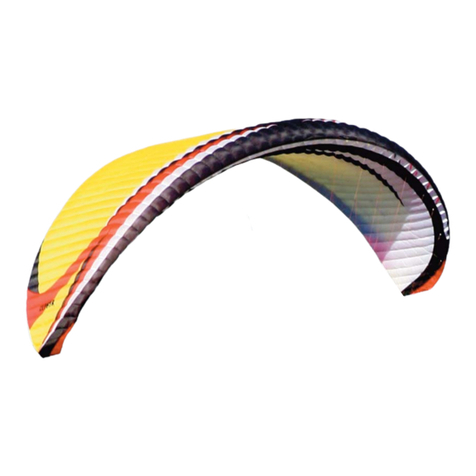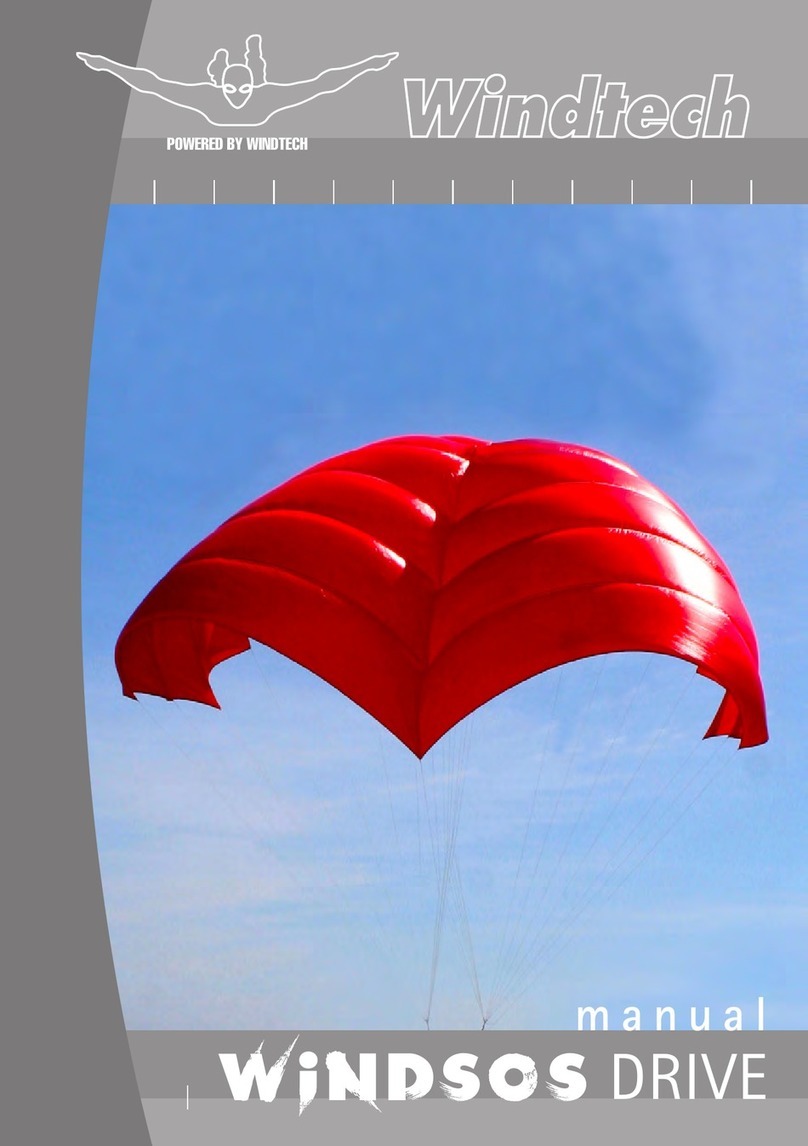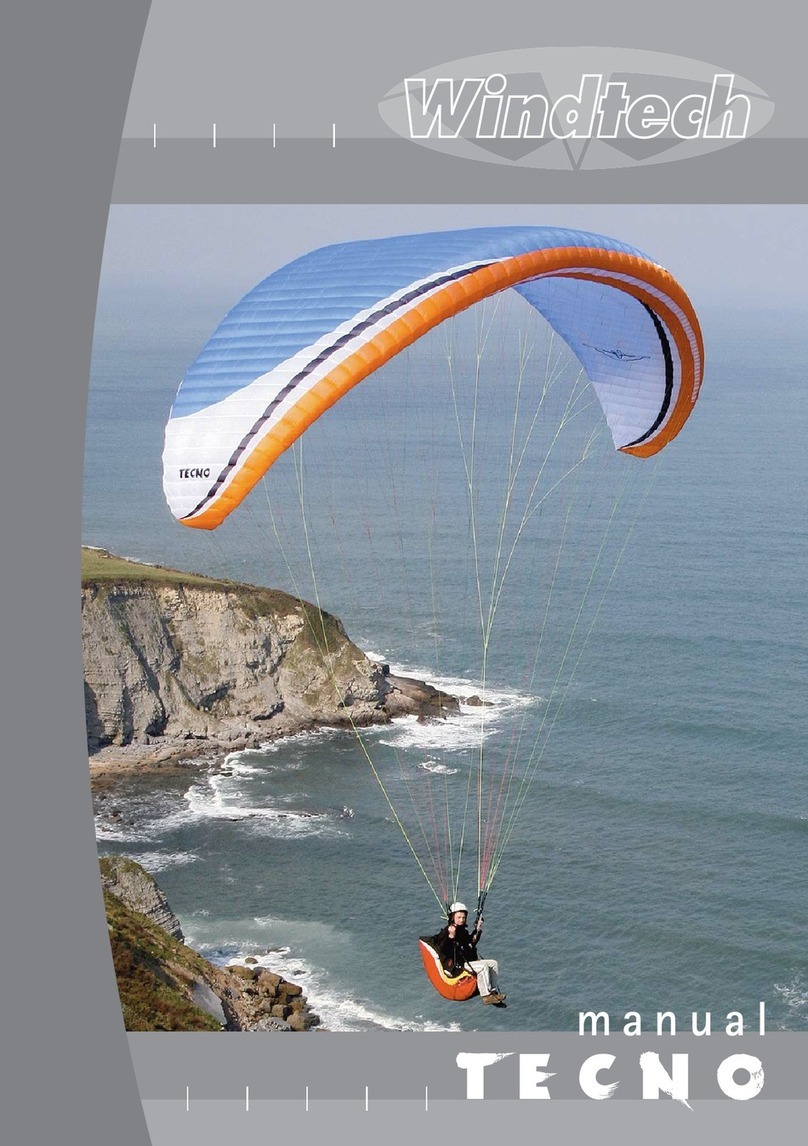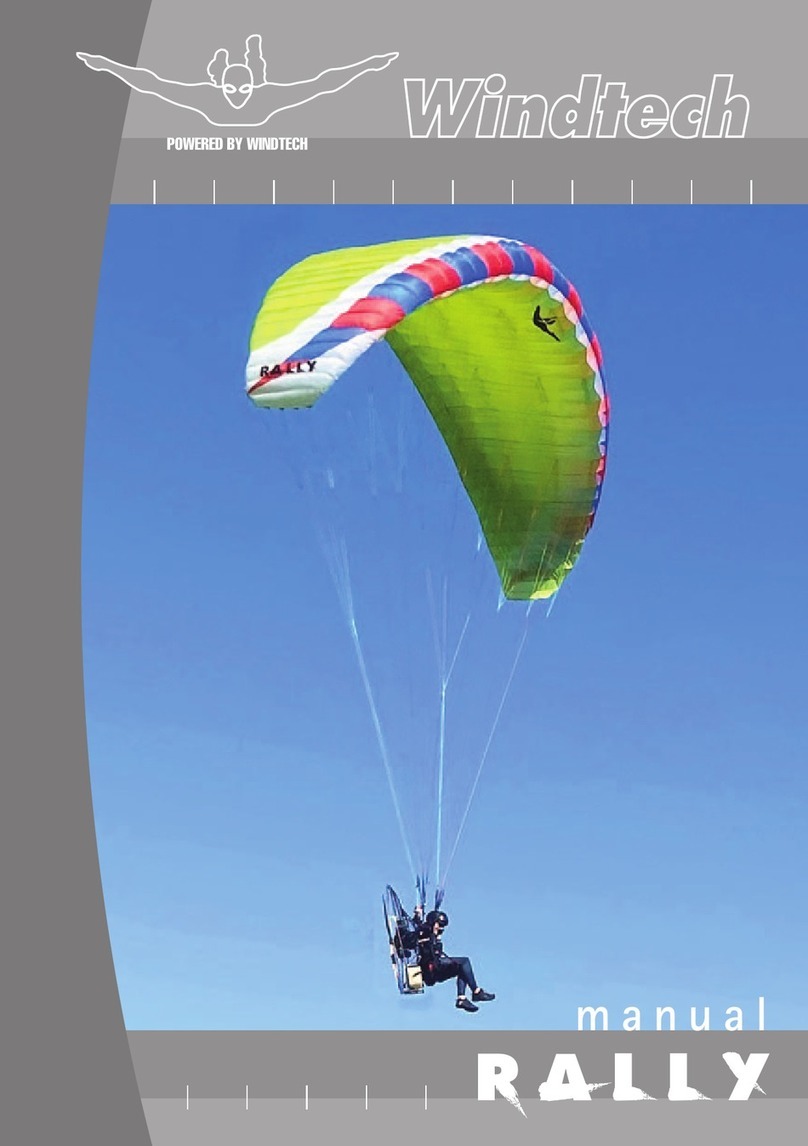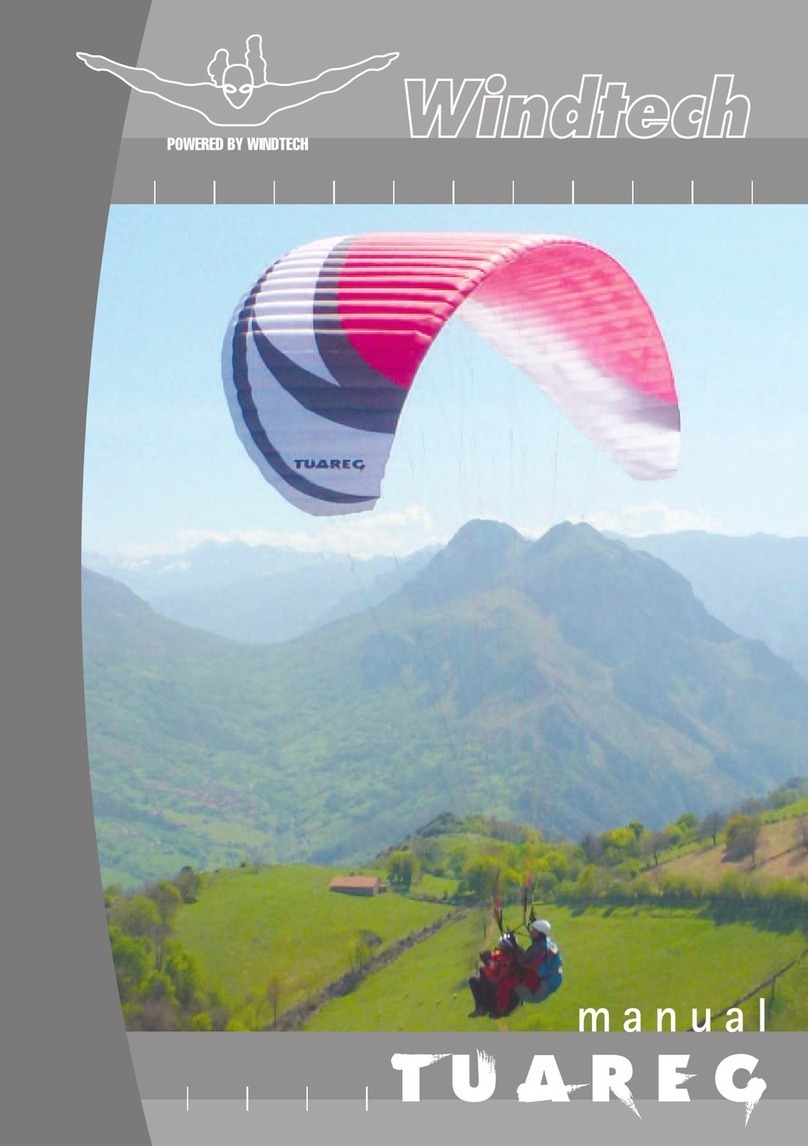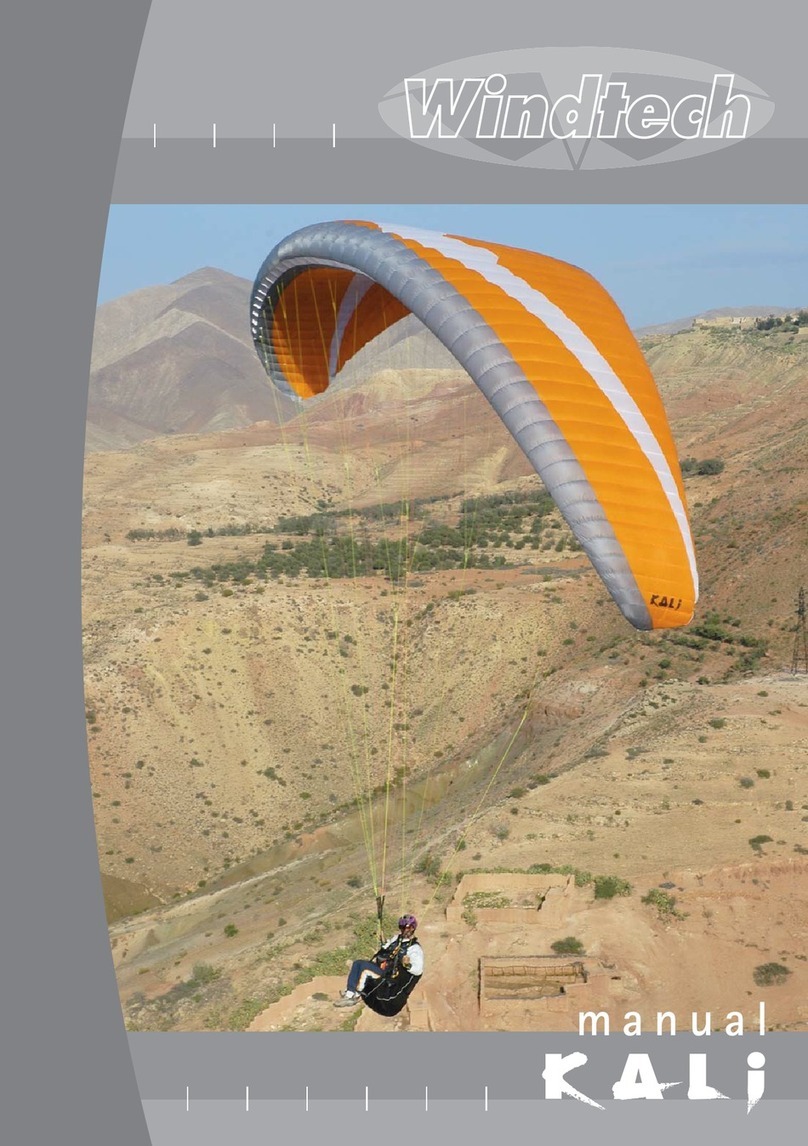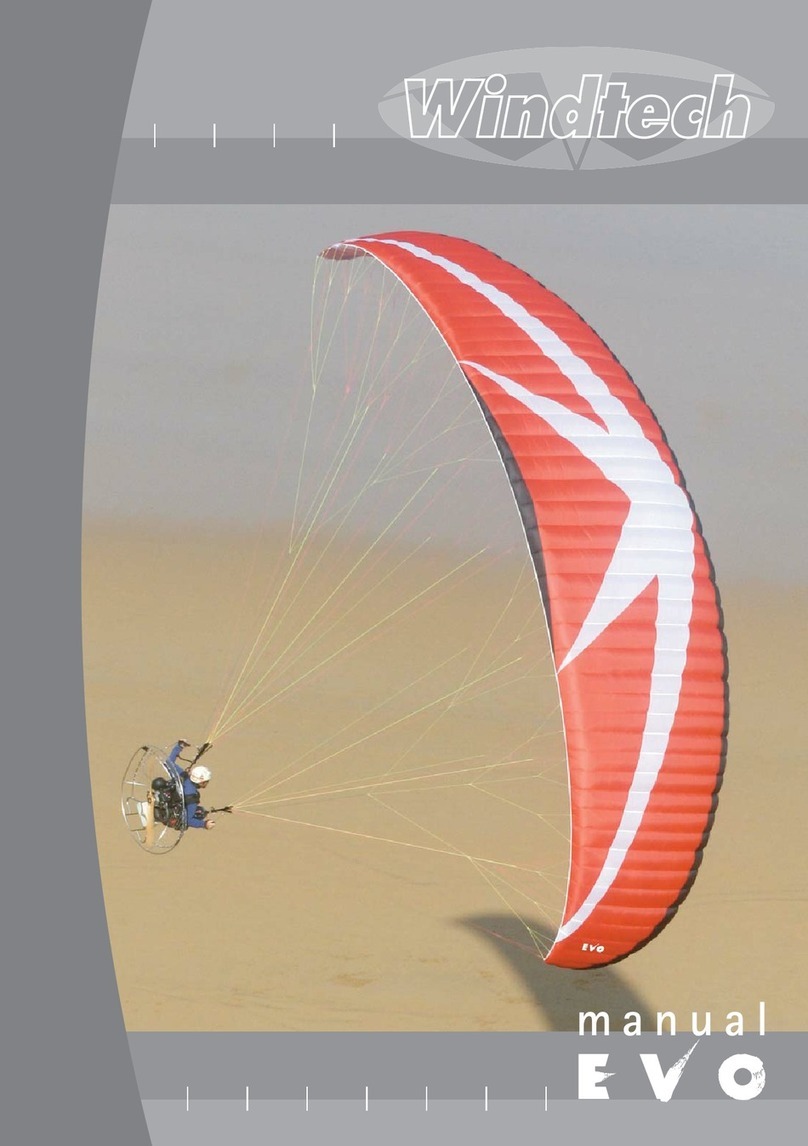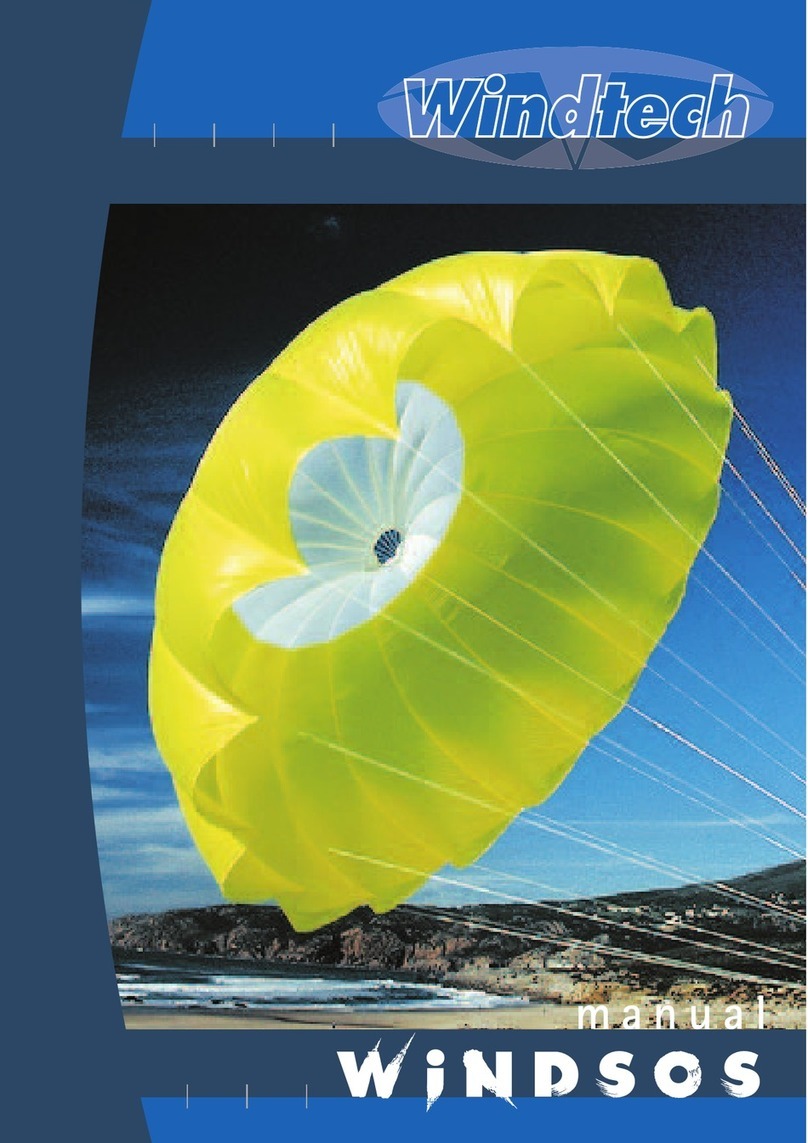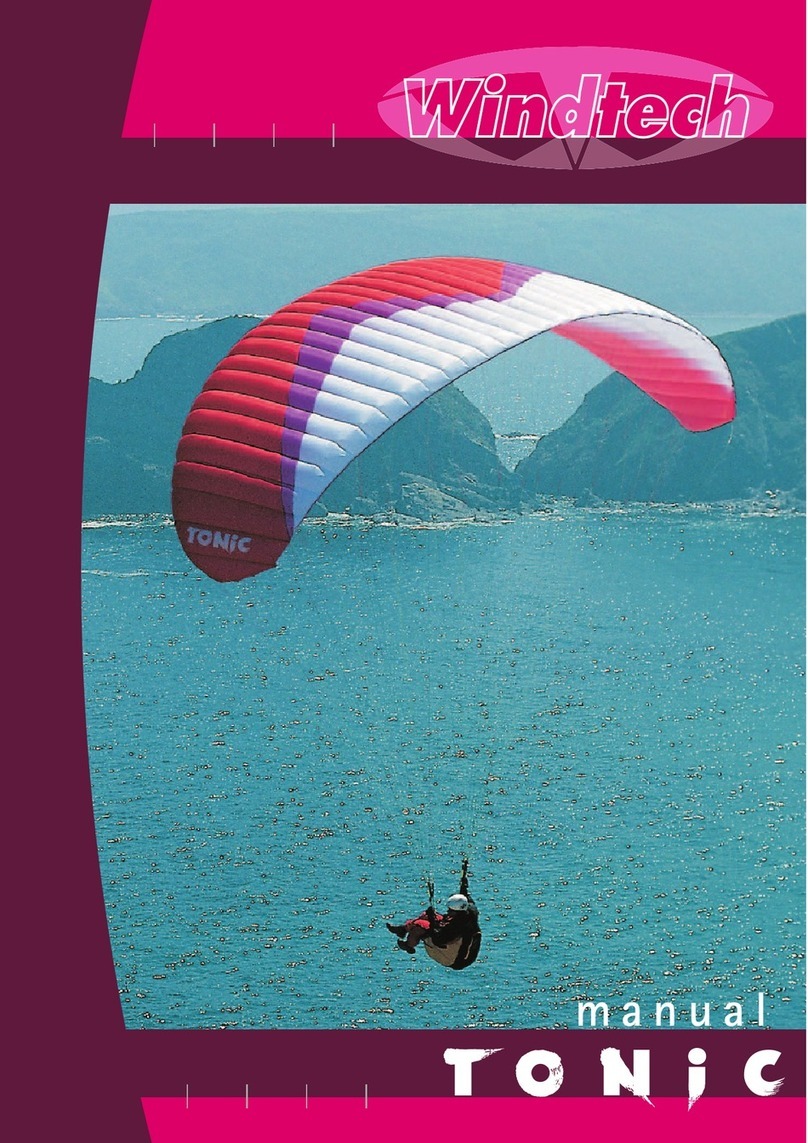
better to under-react than to over-react. Over reacting to a situation can prevent the
glider from self-recovering, and recovering air speed, and cause it to enter further unsta-
ble situations.
-- asymmetrical tuck/collapse
An asymmetric tuck / collapse is when part (one side) of the wing ( say 20% or even any-
thing up to 90% of the span) tucks or collapses, usually induced by turbulence but some-
times also though poor pilot control in turns and wing-overs.
The ARIAL is tested and certified to automatically recover without correction by the pilot
with a maximum direction change of 90 degrees of turn, but with the correct input the
pilot can minimise any turning, and height loss, and help the glider recover more quick-
ly.
There are 3 basic steps to follow immediately if you have a collapse:
1:Weight shift to the flying side of your glider (away from the collapsed side). This helps
stop the rotation &increases pressure in the wing in the inflated side.
2:If needed apply the correct amount of brake to the open (flying) side to slow any rota-
tion (spiral) induced by the collapse. Be very careful not to use too much brake as its pos-
sible to stall the flying side of the glider,and enter further unstable situations which may
be harder to recover from than the collapse itself.
3:Once the glider has straightened out, or the spiral has slowed, smoothly pull down the
brake on the collapsed side, with a long stroke/pump, &the deflated side of the glider
should re-inflate. As the glider re-opens release the brake immediately but progressively.
With instruction &experience the above will become a reflex action, and the correct
input to give will become second nature to the experienced pilot.
-- front/symmetrical tuck collapse
Afront tuck /collapse is a symmetric tuck of the leading edge of the wing, starting from
the centre of the canopy to the wing tip. This can be either a tucking of just the central
part of the leading edge of the glider,which can sometimes cause a front 'horseshoe' or
'rosette-ing' of the glider,or even a complete 'blow-out' of the whole canopy in extreme
situations.
When flying, a front tuck may occur while leaving a strong thermal, or more often while
using the speed system in turbulent air, or sometimes whilst flying down-wind of anoth-
er paraglider &being 'waked' by the wing tip vortices of the glider and wake turbulence
of the pilot.
Remember,the pilot can learn to help stop collapses by flying 'actively', but if a front
tuck does occur it will easily clear itself. Re-inflating the wing can be helped by correct
pilot input and, once the glider is overhead, symmetrically applying 40 % of both brakes
&then releasing immediately will get pressure back in to the glider and speed up the
10

